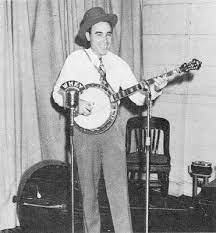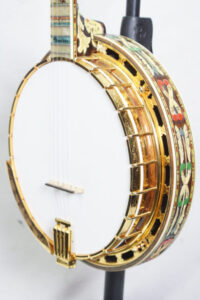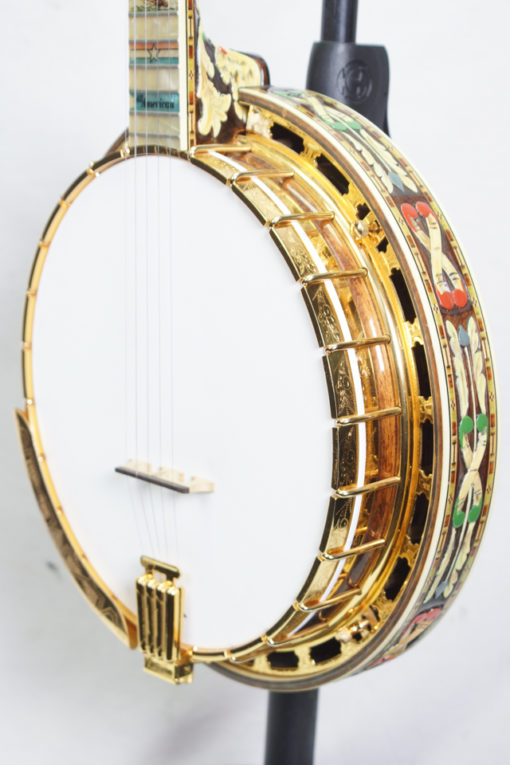Since 1894, Gibson has been producing some of the finest instruments known to Earth. Their guitars are internationally recognized some of the best classic electrics ever made. Their mandolins are cherished for their rich and loud tone. The banjos, however, are specifically special to players. Since the 70s every player has needed a Pre-War Gibson for what they call the “Pre-War banjo sound.” This article analyzes what that means and why the Pre-War Gibson has become a staple of banjo culture.
Gibson Mandolin-Guitar Mfg. Co. Ltd. – the Beginning
Gibson was originally a mandolin company. Founded by Orville Gibson, the company’s purpose was to produce the ting-y, cutting sound of steel strings on a mandolin. When Orville began producing banjos, they were created with the same structure and build conducive to steel strings, like mandolins. This most likely contributed, at least in part, to the Gibson “Pre-War sound,” given that most banjos of the time were set up for gut strings.
Earl Scruggs
Earl Scruggs, who really set the standard for the Gibson sound, owned and played dozens of banjos during his lifetime. he began with a 1934 Gibson RB-11, his first banjo

This was the banjo Earl used to record the original Foggy Mountain Breakdown album. It gave a snappier tone than his following banjos.
Over time, Earl traded and played many other instruments. He played an RB-75 with a calf skin head which he allegedly recorded Bluegrass Breakdown with (its hard to tell). His final banjo was his famous Gibson Grenada original 5-string which he received in a trade from fellow banjo player Don Reno in exchange for 2 of his banjos, despite its terrible condition.


Though the Granada Scruggs acquired was abysmal from use, he saw potential and after rounds of modification, it became the instrument that inspired most of the pre-war mania.
Gibson Granadas are renowned for their ability to produce a bright, enticing sound but also access a wide range of sweet, more mellow tones. While not the most expensive model of banjos at the time, beaten out by models like the Florentine or All-American, it was one of the best. Made with gold plated hardware, 3-ply maple necks, and elaborate resonator/neck finishes, it sold for around 200$ in the ’20s.
The “Pre-War Gibson Tone”
I’ve mentioned the “Pre-War Gibson sound” many times illusively, without description. That’s because it really is difficult to define.
For years, banjo players everywhere have been chasing this sound. At a basic level, the “Pre-War Gibson sound” is Earl Scruggs’ Gibson Grenada. Most people classify it as bold, powerful, and sometimes rich. The sound is mostly subjective, however. Its believed that it comes from both the construction of the banjo by Gibson in the 30s and the age of the woods.
One of the things that contributes the most to the sound of banjos specifically, is how long they’ve aged. A banjo that has undergone modification can sound differently every day for months until the wood finally settles to the metal or the wood begins to delaminate or humidity diminishes the head tension, etc. (I would know, I’ve experienced it).

Wood also settles over time and that’s especially true in banjos. They can be completely deconstructed and then put back together.
These Gibsons are also characterized, in the ’30s by a one-piece flange. Banjos in the ’20s were made with two-piece flanges which were made with more metal and, thus, were more expensive. During the Great Depression, Gibson cut metal usage to decrease costs. The less metal decreased sustain and increased the cutting drive of the banjos sound.
The Modern Day Obsession
The way most try to achieve this sound, without buying a $70,000 original five-string 30’s banjo, is by obtaining a Pre-War Gibson banjo from the 1930s with a one-piece flange, a tone ‘hoop’ instead of ‘ring’ and then replacing it, and changing the neck so it can be played 5-string rather than 4-string tenor or plectrum.
Still, some 1920’s two-piece flange banjos are valued by some banjo players (like myself).
People like Jim Mills and Steve Huber, however, attempt to keep alive the original 5-string, one-piece flange, no-hole flathead, 1930s Gibson sound.
Steve Huber makes reproduction of Gibson banjos by deconstructing and analyzing the metal construction of actual prewar. Jim Mills believes you can find old sub-Mastertones an modify them to sound very similar and sell for roughly the same price.
Steve Huber’s Website: https://huberbanjos.com/
Jim Mill’s Website: https://prewargibsonbanjos.com/
These two can certainly be considered experts in the area of Gibson banjos yet, despite their proficiency, they both still believe that the Pre-war Gibson sound is subjective. In an interview with UNC-TV, Mills described them as “powerful … you can play them light and they’ll produce what you want or you can really get at them and play them hard, they don’t lay down” “Their tone is unique in that they can be a cracking bright tone but them it can be a mellow kind of rich sound.”
Conclusion
Gibson banjos have spread in popularity and in price since their usage by Earl Scruggs and then by other famous players like Sonny Osbourne and JD Crowe. Their tone can never really be agreed upon due to the subjectivity but the power and dynamics make it preferred by most professional players. Despite the uncertainties behind their mystical sound and where it comes from, Gibson’s pre-war banjos can still be considered a global gold standard.






